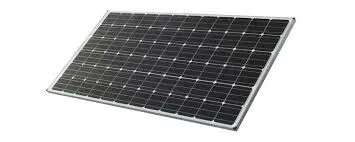Different Categories of Solar Inverters Explained for Better Energy Management
Types of Solar Inverters A Comprehensive Guide
Solar inverters are crucial components of solar power systems, converting the direct current (DC) produced by solar panels into alternating current (AC) that can be used by home appliances or fed into the electrical grid. Choosing the right type of solar inverter is essential for optimizing energy efficiency and system performance. This article explores the different types of solar inverters available on the market today, detailing their features, advantages, and drawbacks.
1. String Inverters
String inverters are the most common type of solar inverters found in residential and commercial solar installations. In this setup, multiple solar panels are connected in a series, or “string,” to a single inverter.
Advantages - Cost-Effective String inverters are generally less expensive than other inverter types, making them an economical choice for many homeowners. - Simplicity Installation and maintenance are straightforward due to fewer components involved.
Drawbacks - Shading Issues If one panel in the string is shaded or underperforming, it can affect the entire string’s performance, reducing overall energy output. - Limited Monitoring Typically, string inverters provide limited data on individual panel performance.
2. Microinverters
Microinverters are small inverters installed on each solar panel individually. This technology allows each panel to operate independently, optimizing energy production on a per-panel basis.
Advantages - Maximized Energy Harvesting Microinverters minimize the impact of shading or panel malfunction, as each panel's output is optimized separately. - Enhanced Monitoring Capabilities Users can monitor the performance of each panel, making it easier to identify underperforming units.
Drawbacks - Higher Cost Microinverters tend to be more expensive than string inverters due to the need for multiple units. - Complex Installation Because of the additional components, installation can be more complicated.
Power optimizers are similar to microinverters but function differently. They are installed at each solar panel, working in conjunction with a central string inverter. Each optimizer enhances energy production by allowing for individual panel optimization without the need for multiple inverters.
types of solar inverter

Advantages - Increased Efficiency Power optimizers mitigate the effects of shading and panel mismatch, enhancing overall energy output. - Cost-Effective Solution While more expensive than string inverters, they are less costly than microinverters, offering a good balance between performance and price.
Drawbacks - Dependency on String Inverter Power optimizers still require a central inverter, which can lead to points of failure if the string inverter malfunctions.
4. Hybrid Inverters
Hybrid inverters are versatile devices that can handle both solar energy and battery storage systems. They allow for energy from solar panels to be used directly, stored in batteries for later use, or sent to the grid.
Advantages - Energy Storage Compatibility Ideal for homeowners looking to have backup power during outages or to maximize self-consumption. - Flexible Usage Users can choose to store excess energy for later use or sell it back to the grid, providing financial flexibility.
Drawbacks - Higher Initial Investment Hybrid inverters and the required battery storage systems tend to come at a higher cost compared to standard string or microinverter setups. - Complex System Design These systems can be more complex to design, requiring careful planning based on energy needs.
5. Central Inverters
Central inverters are primarily used in large-scale commercial or utility-grade solar installations. They can manage energy input from multiple strings of solar panels.
Advantages - High Performance Central inverters are robust, capable of handling substantial amounts of energy, making them suitable for large applications. - Lower Cost per Watt In large installations, they can reduce overall costs when compared to multiple smaller inverters.
Drawbacks - Single Point of Failure If the central inverter fails, the entire solar system may come offline, impacting energy production. - Limited Flexibility They are not suitable for smaller residential setups due to size and capacity.
Conclusion
Choosing the right type of solar inverter is a pivotal decision for solar energy systems. It can significantly affect energy efficiency, cost, and system longevity. Homeowners and businesses should carefully assess their energy needs, installation circumstances, and budget constraints before making a choice. By understanding the differences and benefits of each inverter type, users can harness the full potential of solar energy, contributing to a sustainable future.
-
Unlocking Energy Freedom with the Off Grid Solar InverterNewsJun.06,2025
-
Unlock More Solar Power with a High-Efficiency Bifacial Solar PanelNewsJun.06,2025
-
Power Your Future with High-Efficiency Monocrystalline Solar PanelsNewsJun.06,2025
-
Next-Gen Solar Power Starts with Micro Solar InvertersNewsJun.06,2025
-
Harnessing Peak Efficiency with the On Grid Solar InverterNewsJun.06,2025
-
Discover Unmatched Efficiency with the Latest String Solar InverterNewsJun.06,2025







